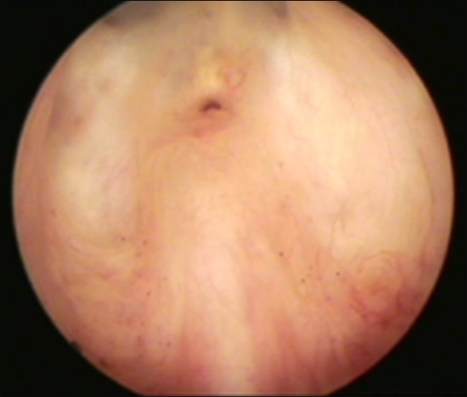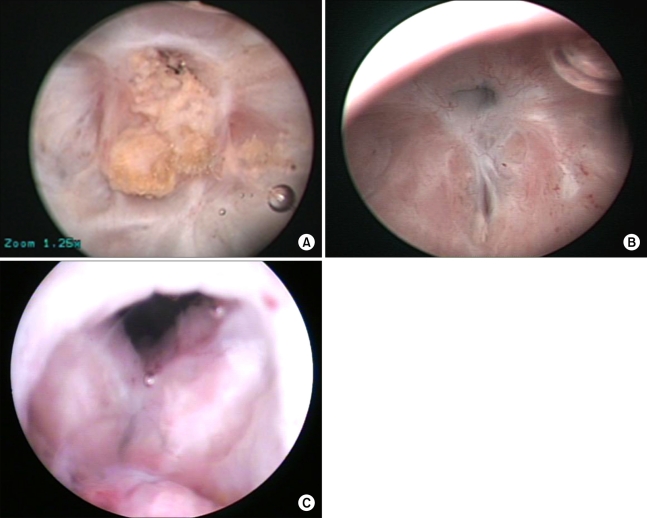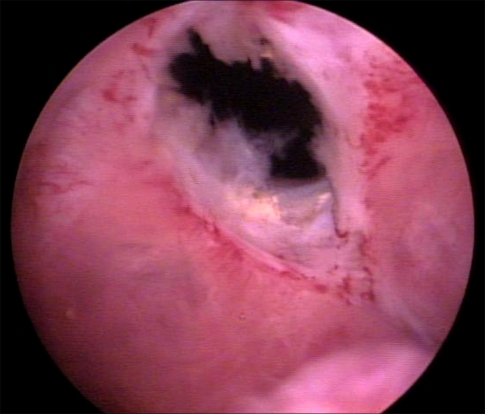Korean J Urol.
2010 May;51(5):330-336.
The Efficacy and Safety of Photoselective Vaporization of the Prostate with a Potassium-titanyl-phosphate Laser for Symptomatic Benign Prostatic Hyperplasia according to Prostate Size: 2-Year Surgical Outcomes
- Affiliations
-
- 1Department of Urology, Seoul National University College of Medicine, Seoul, Korea. jspaick@snu.ac.kr
Abstract
- PURPOSE
We investigated 2-year follow-up outcomes of patients who underwent potassium-titanyl-phosphate (KTP)-photoselective vaporization of the prostate (PVP) laser therapy for symptomatic benign prostatic hyperplasia (BPH). MATERIALS AND METHODS: Of a total of 169 patients who underwent 80 W KTP-PVP by a single surgeon, we retrospectively analyzed the clinical data of 74 patients who completed 2 years of follow-up. The efficacy of the PVP was assessed at 1, 3, 6, 12, and 24 months postoperatively by use of the International Prostate Symptom Score (IPSS) and uroflowmetry with postvoid residual urine volume (PVR). Safety, including complications, was evaluated at each visit. RESULTS: Mean preoperative total prostate and transitional zone volumes were 42.3 ml (range, 34.0-59.0 ml) and 18.6 ml (range, 10.1-28.6 ml) respectively. According to both IPSS and uroflowmetry, compared with baseline, the improvement in each parameter was sustained significantly at both 1 and 2 years postoperatively (p<0.05). There were no serious intraoperative complications, such as massive hemorrhage requiring transfusion or transurethral resection syndrome. Transient gross hematuria occurred in 16 (21.6%) cases, urgency incontinence in 6 (8.1%) cases, bladder neck contracture (BNC) in 3 (4.1%) cases, and urethral stricture in 1 (2.7%) case. The cases of urethral stricture and BNC developed only in the group with a prostate size of less than 45 ml. No cases required reoperation due to re-growing prostatic tissue. CONCLUSIONS: PVP seems to be a safe and effective procedure for the surgical treatment of symptomatic BPH. After PVP, the subjective and objective improvements in the micturition parameters were sustainable up to 2 years, with minimal complications.
MeSH Terms
Figure
Reference
-
1. Lee E, Yoo KY, Kim Y, Shin Y, Lee C. Prevalence of lower urinary tract symptoms in Korean men in a community-based study. Eur Urol. 1998; 33:17–21. PMID: 9471036.
Article2. Madersbacher S, Alivizatos G, Nordling J, Sanz CR, Emberton M, de la Rosette JJ. EAU 2004 guidelines on assessment, therapy and follow-up of men with lower urinary tract symptoms suggestive of benign prostatic obstruction (BPH guidelines). Eur Urol. 2004; 46:547–554. PMID: 15474261.
Article3. Wasson JH, Reda DJ, Bruskewitz RC, Elinson J, Keller AM, Henderson WG. The Veterans Affairs Cooperative Study Group on Transurethral Resection of the Prostate. A comparison of transurethral surgery with watchful waiting for moderate symptoms of benign prostatic hyperplasia. N Engl J Med. 1995; 332:75–79. PMID: 7527493.
Article4. Rassweiler J, Teber D, Kuntz R, Hofmann R. Complications of transurethral resection of the prostate (TURP)-incidence, management, and prevention. Eur Urol. 2006; 50:969–979. PMID: 16469429.
Article5. Te AE, Malloy TR, Stein BS, Ulchaker JC, Nseyo UO, Hai MA, et al. Photoselective vaporization of the prostate for the treatment of benign prostatic hyperplasia: 12-month results from the first United States multicenter prospective trial. J Urol. 2004; 172:1404–1408. PMID: 15371855.
Article6. Bachmann A, Schürch L, Ruszat R, Wyler SF, Seifert HH, Müller A, et al. Photoselective vaporization (PVP) versus transurethral resection of the prostate (TURP): a prospective bi-centre study of perioperative morbidity and early functional outcome. Eur Urol. 2005; 48:965–971. PMID: 16126327.
Article7. Spaliviero M, Araki M, Page JB, Wong C. Catheter-free 120W lithium triborate (LBO) laser photoselective vaporization prostatectomy (PVP) for benign prostatic hyperplasia (BPH). Lasers Surg Med. 2008; 40:529–534. PMID: 18798292.
Article8. McAllister WJ, Gilling PJ. Vaporization of the prostate. Curr Opin Urol. 2004; 14:31–34. PMID: 15091047.
Article9. Choo SH, Han DH, Lee SW. The efficacy and safety of KTP photoselective vaporization of the prostate for the treatment of benign prostatic hyperplasia: the 2-year results. Korean J Urol. 2008; 49:831–836.
Article10. Margel D, Lifshitz D, Brown N, Lask D, Livne PM, Tal R. Predictors of nocturia quality of life before and shortly after prostatectomy. Urology. 2007; 70:493–497. PMID: 17905104.
Article11. Monoski MA, Gonzalez RR, Sandhu JS, Reddy B, Te AE. Urodynamic predictors of outcomes with photoselective laser vaporization prostatectomy in patients with benign prostatic hyperplasia and preoperative retention. Urology. 2006; 68:312–317. PMID: 16904443.
Article12. Hwang CH, Cho CK, Lee YK, Hong SJ. Comparative analysis of short-term efficacy and complication of photoselective vaporization for benign prostatic hyperplasia which was classified by prostate size. Korean J Urol. 2007; 48:826–831.
Article13. Lee J, Kang SH, Kim JJ. Evaluation of the quality of life and the efficacy of treatment after high power potassium-titanyl-phosphate (KTP) laser vaporization for patients with a prostate volume greater than 40 cc. Korean J Urol. 2007; 48:956–964.14. Malek RS, Kuntzman RS, Barrett DM. Photoselective potassium-titanyl-phosphate laser vaporization of the benign obstructive prostate: observations on long-term outcomes. J Urol. 2005; 174:1344–1348. PMID: 16145416.
Article15. Reich O, Bachmann A, Siebels M, Hofstetter A, Stief CG, Sulser T. High power (80 W) potassium-titanyl-phosphate laser vaporization of the prostate in 66 high risk patients. J Urol. 2005; 173:158–160. PMID: 15592063.
Article16. Horasanli K, Silay MS, Altay B, Tanriverdi O, Sarica K, Miroglu C. Photoselective potassium titanyl phosphate (KTP) laser vaporization versus transurethral resection of the prostate for prostates larger than 70 mL: a short-term prospective randomized trial. Urology. 2008; 71:247–251. PMID: 18308094.
Article17. Sandhu JS, Ng C, Vanderbrink BA, Egan C, Kaplan SA, Te AE. High-power potassium-titanyl-phosphate photoselective laser vaporization of prostate for treatment of benign prostatic hyperplasia in men with large prostates. Urology. 2004; 64:1155–1159. PMID: 15596189.
Article
- Full Text Links
- Actions
-
Cited
- CITED
-
- Close
- Share
- Similar articles
-
- Potassium-Titanyl-Phosphate Laser Photoselective Vaporization of the Prostate in Patients with Benign Prostatic Hyperplasia with Detrusor Underactivity: Influence on Detrusor Pressure
- Changes in Serum Prostate-Specific Antigen Levels after Potassium-Titanyl-Phosphate (KTP) Laser Vaporization of the Prostate
- Impact of Prostate Volume on the Efficacy of High-Power Potassium-Titanyl-Phosphate Photoselective Vaporization of the Prostate: A Retrospective, Short-Term Follow-Up Study on Evaluating Feasibility and Safety
- Comparative Analysis of Short-term Efficacy and Complication of Photoselective Vaporization for Benign Prostatic Hyperplasia which was Classified by Prostate Size
- A Short-term Results on Efficacy and Safety of High Power (80W) KTP (Potassium-Titanyl-Phosphate) Laser Vaporization of the Prostate




